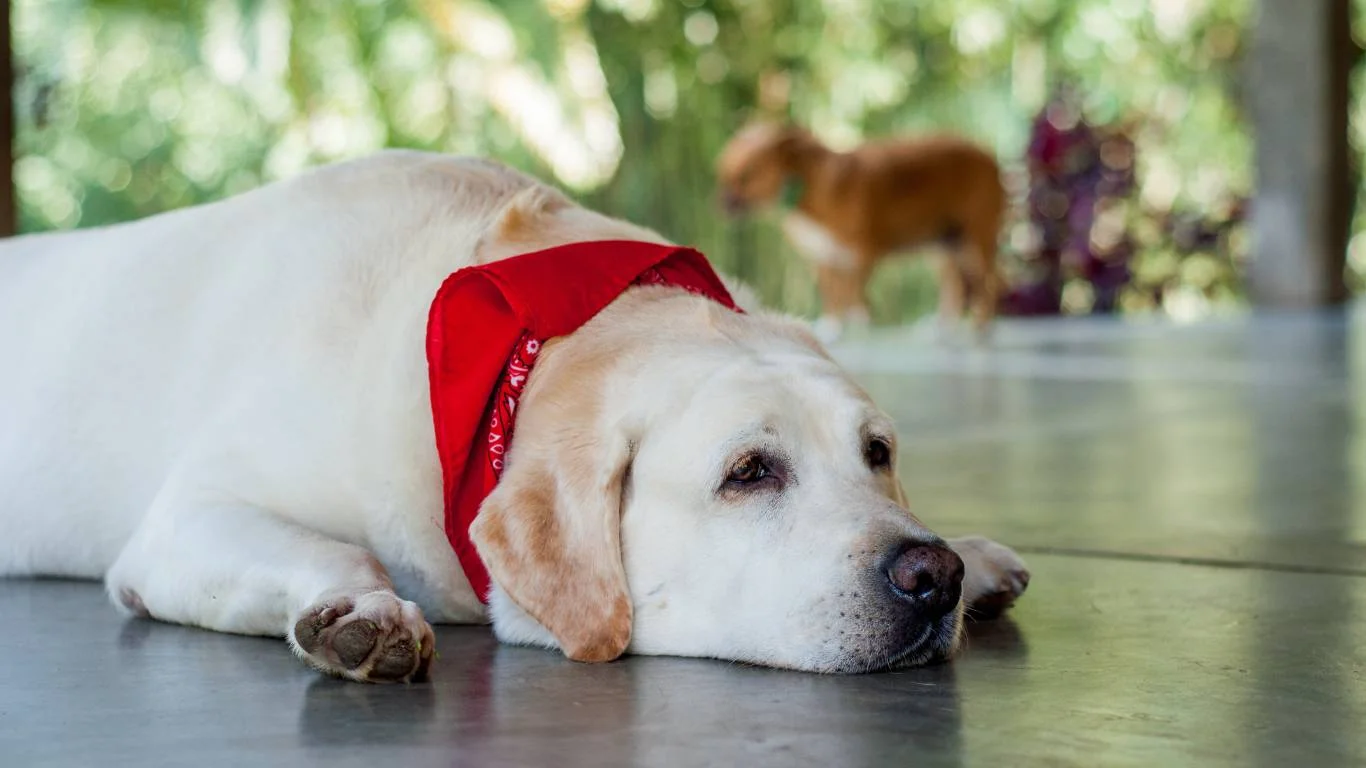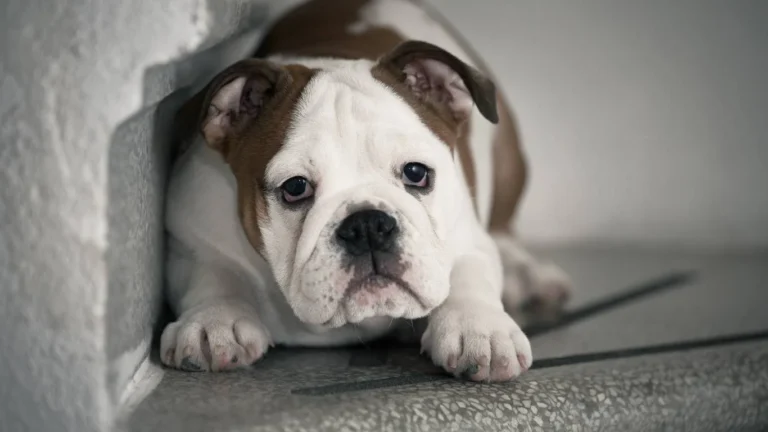Simple Ways to Keep a Senior Dog Mentally Stimulated Daily
If you’ve ever had the joy of caring for a senior dog, you know that their needs shift in many ways as they age. One thing that’s super important, yet sometimes overlooked, is how to keep a senior dog mentally stimulated. From my experience as a Veterinary Assistant with a nutrition focus, I’ve seen firsthand how maintaining a dog’s mental sharpness can make a huge difference in their quality of life. Just like humans, older dogs can start to slow down mentally, and without proper engagement, they might become bored, anxious, or even depressed. But the good news is there are plenty of ways to keep those tails wagging and minds active well into their golden years.
Mental Stimulation: Why It Matters for Senior Dogs

You might wonder why mental stimulation is so crucial for older dogs. Well, as dogs age, their brain function naturally declines, similar to humans. This can lead to cognitive dysfunction syndrome (CDS), which is basically doggy dementia. Symptoms include confusion, disrupted sleep patterns, and less interest in things they once loved. But keeping a senior dog’s brain engaged can slow down this decline significantly.
From my time working alongside veterinarians, I’ve learned that stimulating a dog mentally can improve their overall mood and even physical health. When a dog’s brain is active, it helps regulate emotions and can reduce anxiety or destructive behaviors that often pop up when dogs get bored or confused.
Signs Your Senior Dog Needs More Mental Engagement
Not sure if your furry friend needs a mental boost? Here are some common signs that your senior dog might benefit from more brain games and activities:
- Increased lethargy or lack of interest in play
- Disorientation or confusion in familiar places
- Changes in sleep patterns, such as restlessness at night
- Decreased response to commands or cues
- Excessive barking or whining, possibly out of anxiety
Recognizing these early signs means you can act faster to help your pup stay sharp and happy.
How to Keep a Senior Dog Mentally Stimulated: Practical Tips

1. Introduce Interactive Toys and Puzzles
One of the easiest and most effective ways to challenge a senior dog’s brain is through interactive toys. These can range from treat-dispensing puzzles to hide-and-seek games with toys. I’ve seen many senior dogs perk up instantly when they get a new puzzle toy — it’s like they remember how much fun thinking can be!
The key here is to choose puzzles suited to your dog’s physical ability and mental sharpness. Start simple if they haven’t done puzzles before, then gradually increase difficulty. This keeps frustration low and engagement high.
2. Change Up Your Daily Walk Routes
Walks are not just physical exercise but also mental workouts. By changing your regular route, your dog encounters new smells, sights, and sounds. This variety stimulates their senses and cognitive function.
Personally, I’ve found that taking a different park path or walking during a different time of day brings fresh interest to my older dogs. They become curious again, sniffing and exploring instead of just dragging along.
3. Use Food-Based Enrichment
Feeding time can double as brain training. Using slow feeders, puzzle feeders, or scattering kibble around for a mini “hunt” encourages your dog to problem-solve and engage their senses.
With my experience in canine nutrition, I recommend always pairing mental exercises with healthy treats or meals. It’s a win-win—dogs get their food, plus they’re mentally stimulated and satisfied.
4. Teach New Tricks — Yes, Even in Their Senior Years!
There’s this old saying — “You can’t teach an old dog new tricks.” Honestly? Total myth. Senior dogs can absolutely learn new things. In fact, teaching them fresh commands or fun little tricks is one of the best ways to keep their minds sharp. It doesn’t have to be anything complicated — simple cues like “spin,” “touch,” or even revisiting old ones they’ve forgotten can do wonders.
One of the older dogs I worked with, a 12-year-old Lab named Daisy, had slowed down quite a bit. Her owner started working with her again using just five-minute trick sessions, and within a few weeks, Daisy was enthusiastically pawing at bells to ask to go outside. It was a small change that brought a huge shift in her demeanor.
Enrichment Through the Senses

5. Scent Work: Let That Nose Do the Thinking
Dogs experience the world mostly through their noses, and scent games are one of the most natural forms of enrichment for them. Especially for seniors whose mobility may be limited, nose work gives them a chance to work out their brain without overexerting their bodies.
I like to hide small treats around a room or yard and say “find it!” — letting them hunt using their nose. Watching a senior dog light up as they follow a scent trail is honestly one of my favorite things. Plus, this type of activity boosts confidence, especially if they’re starting to feel a little unsure of themselves.
6. Create a Sensory Garden or Safe Outdoor Space
If you’ve got some yard space or even a patio, creating a little sensory zone can be incredibly beneficial. Think different textures under their paws (grass, pebbles, mats), aromatic plants that are safe for dogs like lavender or rosemary, and gentle wind chimes or water features for sound.
One of my clients actually transformed a corner of her yard into a “sniff spot” for her 13-year-old terrier. It was amazing to see how much calmer and more engaged he became after spending just 10-15 minutes out there every day.
Keeping Social Connections Strong

7. Controlled Socialization and Familiar Faces
Mental stimulation isn’t just about puzzles and games — it’s also about emotional engagement. Familiar people, other pets, and even regular visitors can give senior dogs something to look forward to. That said, they might not have the same tolerance or energy they once had, so keeping social experiences calm and positive is key.
If you have friends or family that your dog loves, invite them over for short, low-key visits. Let your dog guide the interaction. Sometimes, just lying next to someone they know and love is enough to bring emotional stimulation that translates to better mental health overall.
8. Doggie Playdates or Low-Energy Doggy Daycare
If your senior dog is still sociable and physically able, gentle playdates with well-matched canine friends can be mentally rejuvenating. Many doggy daycares even offer “senior hours” — quieter times with less stimulation but enough interaction to keep your pup engaged.
We had a senior Poodle come to the clinic whose owner started taking him to a local facility twice a week. He didn’t run around much, but just being around other dogs in a calm setting gave him a sense of belonging and routine.
Routines, Routines, Routines

9. The Mental Power of Predictability
Never underestimate the power of a good routine. While novelty is great for enrichment, consistency is key for mental stability in older dogs. Having a predictable schedule helps reduce anxiety and confusion. This includes set meal times, potty breaks, play, and nap times.
In my practice, I’ve seen senior dogs thrive just by having their days more structured. A Beagle I cared for would get anxious if dinner was even 15 minutes late — but once his owner created a consistent routine and stuck to it, the dog’s mood and behavior noticeably improved.
10. Rotate Activities, Not Just Toys
We often rotate toys to keep them “fresh,” but rotating whole activities is another way to keep things interesting. Instead of doing the same walk every morning and puzzle in the evening, mix it up. Maybe do nose work one day, trick training the next, and a new route walk after that.
This flexible structure allows dogs to enjoy the benefits of novelty while still staying grounded in routine. Think of it as keeping the mind on its toes — or in this case, paws!
11. Include Gentle Physical Activity That Doubles as Brain Work
At this point, you’ve probably got a nice toolbox of ways to keep your senior dog’s mind active. But one underrated combo is blending light exercise with mental tasks. Think of things like short agility sessions (with wide tunnels and low obstacles), or simply using stairs for gentle “up and down” games. These are fantastic because they not only get the body moving but also require some decision-making — and that’s exactly what we want.
I used to set up a tiny indoor obstacle course for an elderly Shih Tzu I worked with. She couldn’t move super fast, but boy, was she proud every time she made it through. Even just navigating from one end of the living room to the other with a purpose gave her that little confidence boost that really stuck.
Routine Check-ins With Your Vet

I can’t stress this enough: partnering with your vet is crucial when planning how to keep a senior dog mentally stimulated. Cognitive decline can often mimic or overlap with physical health issues like arthritis, vision loss, or hearing difficulties. And these can affect how your dog responds to enrichment activities.
I’ve sat in on so many wellness appointments where an owner was convinced their senior pup was “just slowing down” — but after a quick checkup, we’d discover an underlying issue that could be managed. Once that was addressed? That same dog was back to playing with puzzles or greeting visitors at the door like a puppy.
Discuss Brain Health Supplements and Diet
There are actually several nutritional options that support brain health in senior dogs. Things like omega-3 fatty acids, antioxidants, and MCTs (medium-chain triglycerides) have been shown to help with cognitive function. I’ve seen cases where introducing a proper brain-focused diet made a noticeable difference in alertness and energy within weeks.
Brands often create senior-specific formulas that include these ingredients, but always double-check with your vet or a certified canine nutritionist to make sure it’s right for your pup. A supplement isn’t magic, but it can be a powerful piece of the mental wellness puzzle.
Keep Things Fresh, But Stay Attuned to Your Dog’s Limits

A big part of keeping an older dog mentally stimulated is knowing when to switch it up — and when to slow it down. Some days they’ll be ready to chase scents and master new tricks. Other days? They might just want to cuddle and chew on a soft toy.
The real magic happens when you listen to them. I had a senior German Shepherd patient who absolutely loved nose games, but some days he just wanted to lay next to his person while they read a book. Both are valid. Both are enriching. It’s all about balance and knowing your dog’s individual rhythm.
Make It a Bonding Experience
Here’s something I’ve learned not from textbooks, but from years of experience and countless wagging tails — mental stimulation isn’t just about keeping your dog sharp. It’s about deepening your relationship. Every treat puzzle, every new walk route, every trick session… it’s quality time together.
And honestly, that’s the best enrichment of all — connection. If you’re having fun, chances are your dog is too.
References
- American Veterinary Medical Association (AVMA)
- American Kennel Club (AKC)
- ASPCA
- World Small Animal Veterinary Association (WSAVA)
- PetMD
Disclaimer
This article is based on personal experience as a Veterinary Assistant with a focus on nutrition, as well as insights gained from years of working alongside veterinarians and pet parents. The information provided is intended for educational purposes only and does not replace professional veterinary advice. Always consult with your veterinarian before making any significant changes to your dog’s diet, exercise, or mental enrichment routine.






